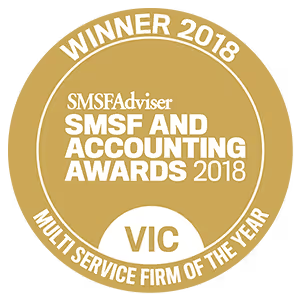When it comes to your superannuation, it’s important to choose the fund that suits your needs.
Not all funds are created equal. Some feature higher fees, other have better returns, and some again are more responsive to customer communication. It can be confusing landing on the right one.
In this article we discuss in detail what a retail superannuation fund is, and when it’s the right choice for managing your superannuation.
Liston Newton Advisory helps inviduals and business owners make the right choices for their future. Get in touch with us today to discuss your superannation needs.
What is a retail superannuation fund?
Put simply, retail superannuation funds are those that are run and managed by a financial company. Unlike a self managed super fund, a retail super fund guides you in investing and managing the money that you place into your super. Your retail super fund will charge a fee for managing your investments, which is usually in a percentage of your funds held.
It’s called a ‘retail’ fund because the financial institution’s ultimate goal is to make a profit from the fees they charge you.
Retail super funds also offer insurance cover to their members, to ensure that you (or your partner’s) retirement isn’t adversely affected by illness, injury, or death. This usually takes the form of income protection, life insurance, or Total & Permanent Disability (TPD) protection.
Historically, retail superannuation funds have allowed a greater level of control over the insurance they offer to their members. Recently, however, this level of control is now available in both retail and industry super funds.
Australia’s top superannuation funds
Here is a list of Australia’s top ten largest super funds, based on the total size of assets under their management.
[table]
[thead]
[tr]
[th]Rank[/th]
[th]Name[/th]
[th]Assets ($,000)
[/tr]
[/thead]
[tbody]
[tr]
[td]1[/td]
[td]Australian Super[/td]
[td]$145,091,424[/td]
[/tr]
[tr]
[td]2[/td]
[td]State Public Sector Superannuation (Qsuper)[/td]
[td]$103,752,495[/td]
[/tr]
[tr]
[td]3[/td]
[td]MLC Super Fund[/td]
[td]$81,341,176[/td]
[/tr]
[tr]
[td]4[/td]
[td]Public Sector Superannuation Scheme[/td]
[td]$78,763,980[/td]
[/tr]
[tr]
[td]5[/td]
[td]Colonial First State[/td]
[td]$77,221,372[/td]
[tr]
[/tr]
[td]6[/td]
[td]First State Superannuation[/td]
[td]$75,203,115[/td]
[/tr]
[tr]
[td]7[/td]
[td]Unisuper[/td]
[td]$71,821,898[/td]
[/tr]
[tr]
[td]8[/td]
[td]Retirement Wrap (BT Super)[/td]
[td]$65,416,679[/td]
[/tr]
[tr]
[td]9[/td]
[td]CSS Fund[/td]
[td]$65,001,249[/td]
[/tr]
[tr]
[td]10[/td]
[td]SunSuper[/td]
[td]$60,317,965[/td]
[/tr]
[/tbody]
[/table]
These figures are based on APRA's Annual Fund-level Superannuation Statistics report 2018.
Fees you can expect to pay with a retail superannuation fund
It’s important to remember that different super funds charge different fees, and it’s these fees that can make all the difference to your end savings. The variation in a few points of a percentage can mean hundreds of dollars difference in fees, which ultimately affects how much savings you end up with.
Here are the most common types of fees you will find.
Administration (or management) fee
This fee covers the cost of administration for your account, and is usually charged as a percentage of your balance. This means that as your savings increase, so does your administration fee.
Investment fee
Much like the administration fee, investment fees are usually charged as a percentage of your balance. This fee is to cover the costs of managing your investment.
Advice fee
If you seek personalised advice from an investment adviser, they will most likely charge you a flat rate fee for this service.
Contribution fee
If you’ve arrived at your super fund through a financial adviser, sometimes they take a small fee each time you make a super contribution, as payment for their recommendation.
Insurance premiums
If you’re paying for insurance on your superannuation, your fund will generally charge you for this by taking a fee directly from your super balance. Most funds offer multiple levels of insurance cover, with fees to match.
Indirect fees
Indirect fees cover the cost of using external resources in the management of your investment. This includes things like engaging the services of an investment manager.
Termination or exit fees
Be aware that some superannuation funds charge fees for closing up your account with them, or for switching your balance to another provider.
The risks of a retail superannuation fund
Frozen funds
When you invest in a retail superannuation fund your money is pooled with other investors, which gets invested all together. Usually, a super fund will then invest in other investment funds.
The danger of being pooled with other investors is that sudden changes in the economy (such as the 2008 global financial crisis) can cause an increased level of risk. If a large number of investors withdraw their money at the same time, this can cause a panic that forces the fund manager to sell some of the investments they hold in order to pay out cash to the investors who are asking for their money back.
During a situation like this is the worst time to sell, as prices drop lower and lower as more investors look to sell too. If the requests for money become too much, the fund manager can freeze the investment fund until the market recovers, meaning it can take several years to get your money back.
Not knowing your actual asset allocation
When you invest in a retail super fund you’re given the option of investing according to your appetite for risk and return. Generally, you’ll have the option of conservative, moderate, balanced, growth, or high growth investments.
The problem with these definitions is that each super fund approaches them differently. Some super funds define balanced as 60% in growth assets (more risk) and 40% in defensive assets (less risk), whereas other super funds may define it as 80% growth and 20% defensive.
The risk here is that you may think you’re being less conservative than you actually are—or you’re taking on more risk than you’re willing to.
Fee complexity
When investing in retail and industry super funds you’ll pay a number of fees, as we’ve outlined above.
These fees are usually charged at a percentage rate of your superannuation balance, which is known as an asset-based fee. This can make it difficult to determine exactly how much you’re paying in fees—and the more money you have in your superannuation, the higher fees you’ll pay. The trustee of your super fund also has the right to increase or decrease the fees they charge you, which further increases the complexity of their fee structure.
When is a retail superannuation fund the best option?
For most people, they’ll prefer the hands-off approach of a retail super fund. It can suit an investor with superannuation balances lower than $250,000, and their set-and-forget ability enables you to delegate full responsibility to a third party, meaning you can be involved as little as you like.
However, some people may want to consider the option of a self managed super fund (SMSF).

When is a Self Managed Superannuation Fund a better option?
In some cases, a self managed super fund(SMSF) might be a better option for your investment.
An SMSF provides you with greater control over your investment strategy, as you choose your investments yourself. This provides you with more flexibility as to what you invest in, outside of the set options a retail super fund provides. Having this hands-on approach provides you with greater knowledge of what you’re invested in, and allows you the ability to better navigate a financial crisis.
Another benefit of an SMSF is that you’re charged fixed fees, rather than a percentage basis, meaning you can more easily calculate how much you’re likely to pay.
So if you prefer to have tighter control over how your investments are managed, and you have the knowledge and ability to understand the market, an SMSF may be a better option.






